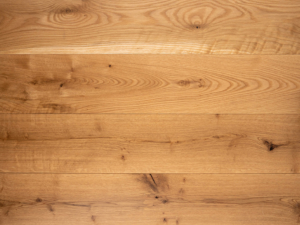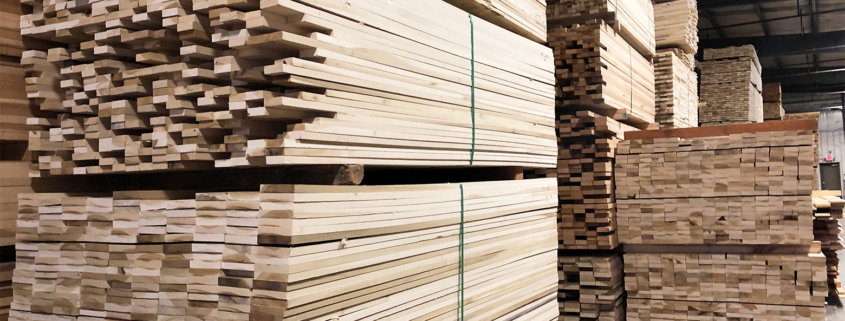Everything You Need to Know About Hardwood Lumber Grades
Lumber is one of our most renewable natural resources. Every wood product created is completely unique, because there are even different grain patterns within the same species.
So, with all this variety, how do you know which lumber quality grade to choose? Let’s take a quick lesson on the differences between grades of lumber so that you can decide which is best for your home improvement or woodworking project.
What Is a Grade of Lumber?
Lumber imperfections occur naturally, and different types of wood have different characteristics. The grading system for lumber looks at these characteristics to put lumber into categories. Lumber grades consider multiple characteristics, such as defects, appearance, durability and structural integrity.

Types of Defects
It’s common for a natural resource like solid hardwood lumber to see a few blemishes. Here are some common examples.
-
- Bow: curve on the face of the board
- Check: crack that does not go through the entire board
- Crook: warp on the edge of the board
- Knot: circular imperfections, also known as knotholes
- Split: crack that goes through the entire board
- Twist: multiple bends in one board
How Does Grading Affect Your Project
The grading system helps woodworkers and craftsmen choose a piece of lumber that works better for that particular application. Some woodworking projects require more durable lumber, while others have the appearance as the determining factor. The best grade for the wood products you purchase is a balancing act between structural integrity, looks and pricing.
As noted by the National Hardwood Lumber Association, the grading system is based on the percentage of clear, defect-free lumber produced per board size. Higher grades of lumber have a minimum yield and requirement larger than lower grades.
How Sawing Affects the Grading System
The sawing method often affects what grade of lumber it produces, mostly because the grading system looks at the minimum yield and cutting size. However, each sawing method can produce different grades of lumber. For instance, live sawn wood boards have a “natural” grade, meaning that it combines all different types of hardwood grading within the same board.

What Is Live Sawn Lumber?
Live sawn lumber uses a unique sawing method for a totally unique wood product. It cuts straight across the log in a single direction, showing off the wood’s multiple natural grain patterns.
Want to learn more about live sawn lumber and where to use it? Check out our recent episode of the American Hardwood Advisor podcast where we sit down with Terry Baird, second-generation owner (and certified lumber grader), to talk about the live sawn process and different lumber grades — all in front of the live sawn white oak paneling that lines our podcast studio!
Watch Here:
Common Types of Lumber Grades
The grade of lumber takes both durability and blemishes into account. Just like the hardwood vs. softwood lumber debate, there’s no one answer for which grade is best; it all depends on what you’re using it for! What works for wall paneling may not be the best choice for your hardwood floor.
Let’s learn more about some of the common types of lumber grades.
Select Grade (SEL)
Select grade is a step up from No. 1 Common Grade. It is very similar to No. 1 when it comes to characteristics, but Select structural lumber (also known as #1 Prime) is typically wane-free.
No. 1 Common Grade
No. 1 Grade, also known as cabinet grade, is high-grade lumber with relatively clear cuttings. This grade of lumber is great for dimensional lumber, mouldings, casings and projects that require finishing. No. 1 Common Grade lumber will have tight knots with less wane than 2A Common Grade lumber.
No. 2A Common Grade
No. 2 Grade lumber, also known as Economy grade, is similar to No. 1 Common Grade. It will have a similar level of quality but with slightly more knots and blemishes. The defects do not affect the overall performance of the board but provide a knotty appearance to show off natural imperfections. No. 2A Common grade lumber is often used as hardwood flooring for its durability and natural look.

Character Grade
Character grade is most commonly used in decking because it has little wane and is structurally sound. While more frequent knots may be found in this grade, they do not affect durability. It is not an appearance lumber, which is why this grade is popular for decking since looks are not as high of a concern on a deck compared to interior applications.
Clear Grade
Clear cuttings of lumber are one of the highest grades you can get. Clear wood means that the boards are defect-free with as few knots as possible. Homeowners and woodworkers typically choose a clear grade when appearance is one of the most important factors in the project.
FAS Grade (First and Seconds)
First and Seconds grade (FAS) is one of the highest grades as a wide board with clear cuttings. It is typically used to build fine furniture and cabinetry. Lumber must have 80% or higher of clear face cuttings on both sides of the board to qualify as FAS grade.
FAS One Face (F1F)
F1F lumber still meets FAS grade requirements but is only required to pass on one face. The lower quality face can meet No. 1 Common grade requirements and still be considered FAS One Face grade. The better face is typically turned outward when appearance is more important.
Stress-Grade
Stress-Graded lumber is specific to lumber that can support a great deal of weight. It is typically tested to determine its capacity for load bearing. Stress-Grade lumber is not chosen for its appearance. In fact, it is commonly used in applications where they are not visible. It is the most common grade of lumber for weight-bearing beams, posts, studs and rafters.
Depending on the end use, stress-graded lumber is divided into four major categories with their own functionality. These categories have different grading rules for quality.
Types of Stress-Grade Lumber
-
-
- Stud: applies to lumber used in vertical, load-bearing wall applications.
- Light Framing: best for lightweight applications with less load-bearing stress – often used as construction grade wall framing and windowsills.
- Structural Light Framing: similar to light framing, varies in the number of defects and is commonly used for trusses.
- Structural Joists and Planks: commonly used as floor joists, rafters, ceiling joists, headers and trusses.
-
Where to Find Your Lumber
At Baird Brothers Fine Hardwoods, we have the lumber quality grades you need to make your home improvement or woodworking project a success. Not sure which grade to go with? We can help with that too! Place your custom hardwood orders online or give us a call today!



